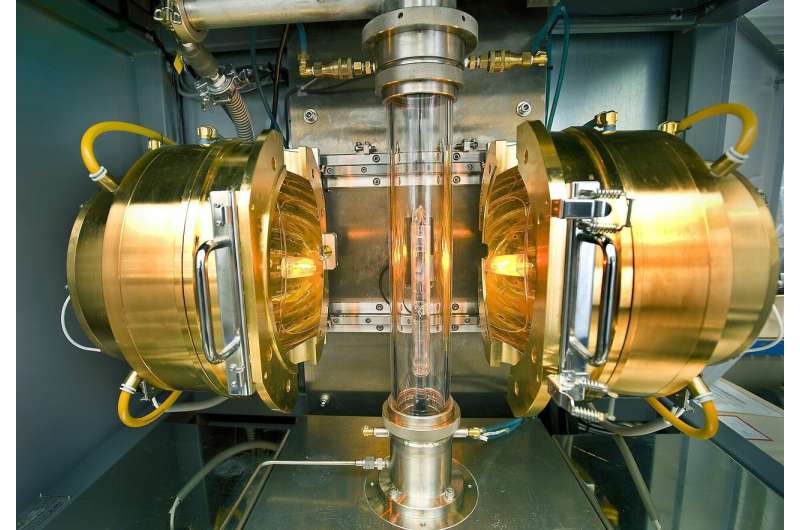Credit: CC0 Public Domain
In the production of integrated circuits (computer chips), continuous innovation is essential to remain competitive. A major goal is to increase the productivity of photolithography machines, which is partly determined by their electromagnetic motors. Ph.D.-candidate Bart Koolmees, from the TU/e department of Mechanical Engineering, focused on developing a superconducting alternative for these motors. His work showed that such a design could increase the power of the motor by more than 500%, and he also devised solutions to some of the main technical challenges: thermal insulation and the integrity of the superconducting coils. He will defend his thesis on 9 December.
In a photolithography machine, an image on a mask is projected multiple times onto a wafer with a photosensitive layer. The image is not projected at once, but is scanned with a small slit of light, like in a photocopier. Accurate electromagnetic motors are used to move both the mask and the wafer synchronously during scanning and reversal. Increasing the acceleration of the motors to increase productivity is often attempted by making optimizations to the current motor design. Using superconductors, as Koolmees proposes, changes the design significantly and allows for a large step forward.
"High" temperature superconducting (HTS) materials have zero electrical resistance at temperatures below 90 K (-183 degrees Celsius); the maximal current they can conduct increases with decreasing temperature. Current densities of 100.000 A/mm2 to 600.000 A/mm2 are feasible in the temperature range of 4 K to 20 K (-269 degrees Celsius to -253 degrees Celsius) compared to 35 A/mm2 in state-of-the-art copper motor coils at room-temperature. For a first demonstrator design, Koolmees proposed to replace one motor half with the superconducting alternative to increase magnetic field strength within the motor.
Five-fold improvement
Because efficiencies for cooling to 4 K (-269 degrees Celsius) lie in the range of 0.04% to 0.14%, Koolmees designed a highly efficient thermal insulation to minimize the cooling effort. This insulation would pass between the two motor halves; to maintain motor efficiency, it should have minimal thickness. Koolmees developed two insulation designs with a thickness of 5 mm, which both maintain the temperature difference of almost 300 degrees while requiring a cooling capacity of less than 1 W for an area of 1.5 m by 2.5 m. He also analyzed the supports and fixation for the superconducting coil for heat loss to a temperature of 4K, showing a thermal conduction below 0.5 W. These heat loads are sufficiently low that commercially available, closed-cycle, coolers would suffice to remove them.
The superconducting coils designed for the motor application experience high mechanical loads, and it is important to understand if mechanical failure can be prevented. Koolmees performed an in-depth analysis to compute mechanical loads for the main load cases. This showed that failure of the superconducting coils can be prevented with the right manufacturing methods.
Koolmees' research showed that a superconducting magnet plate can provide a more than 5-fold improvement in magnetic field strength compared to current state-of-the-art electromagnetic motors. Additionally, his solutions to the main technical challenges make the feasibility of such a magnet plate very likely.
More information: A Superconducting Magnet Plate – for a planar motor application. research.tue.nl/en/publication … ar-motor-application
Provided by Eindhoven University of Technology
























